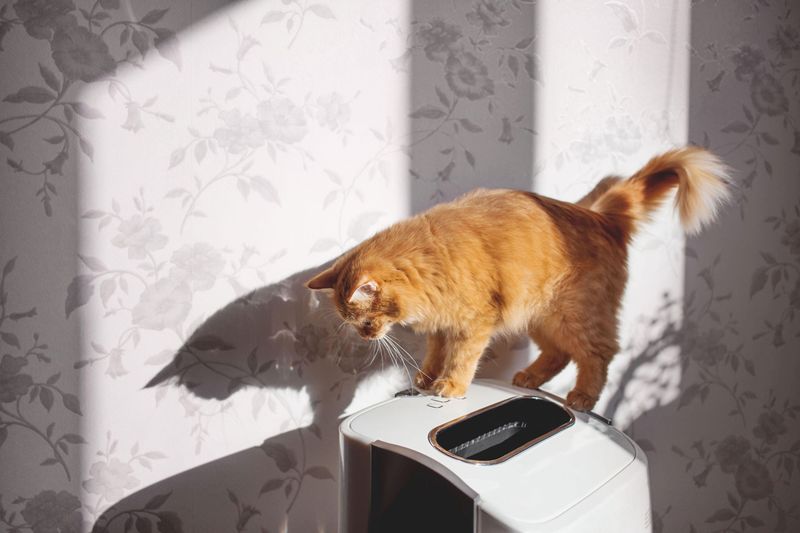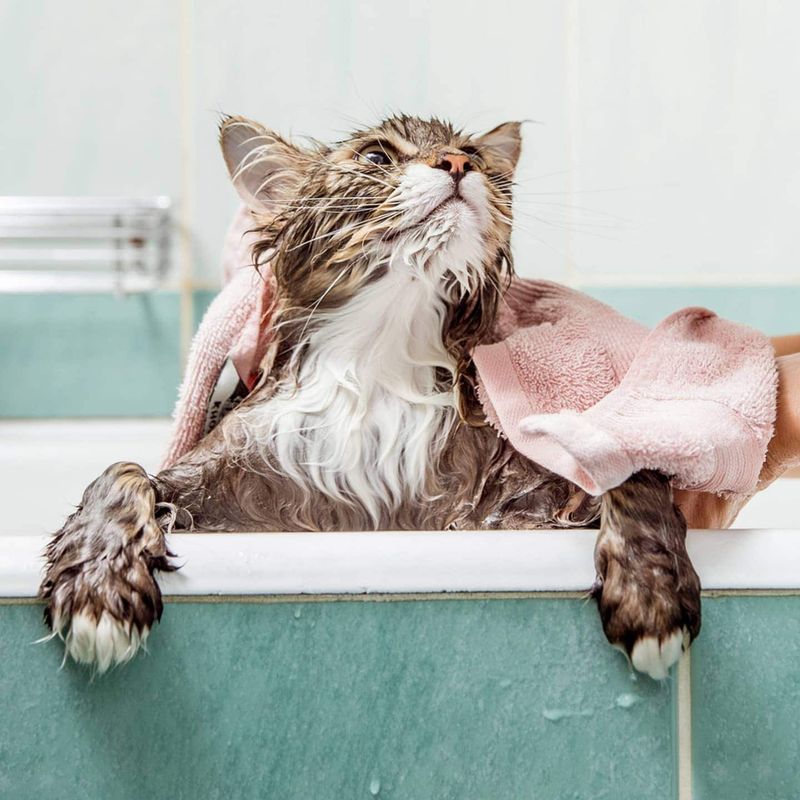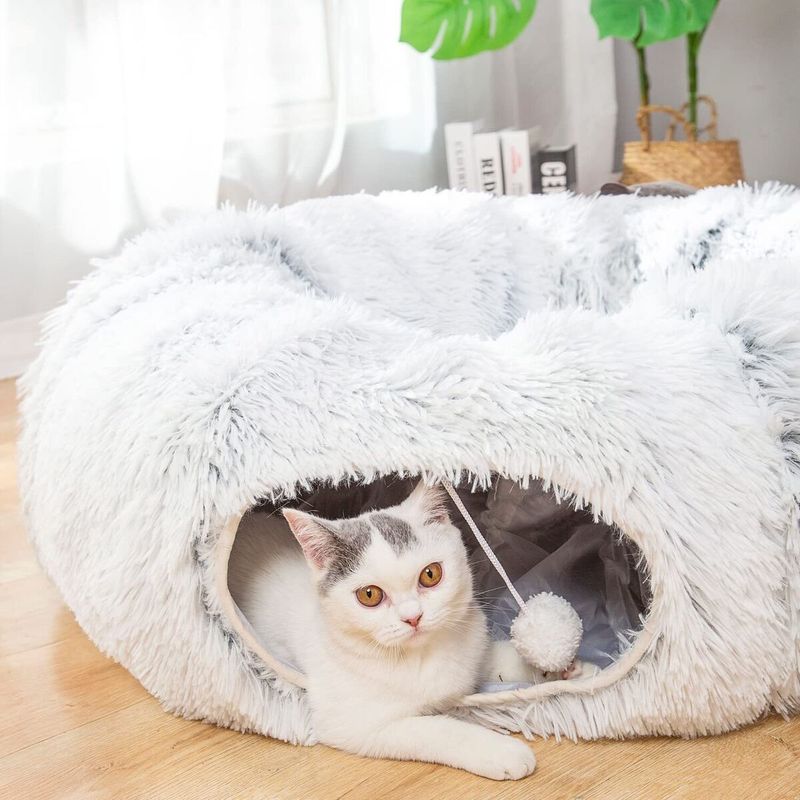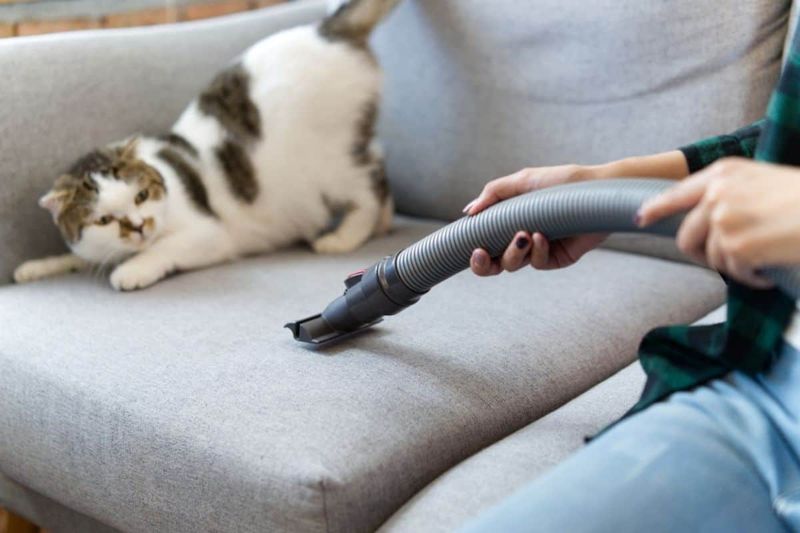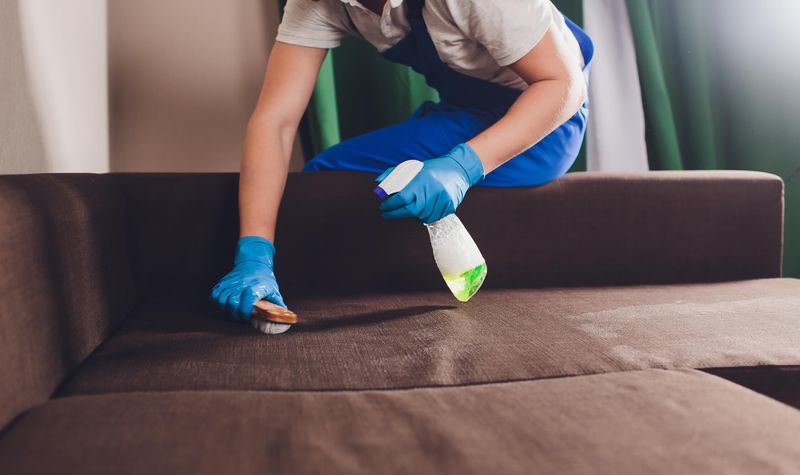Having a cat can be one of the most rewarding experiences, but what if your body doesn’t seem to agree? Cat allergies can be a challenge, but the good news is you don’t have to give up your feline friend to find relief.
With the right strategies, you can reduce allergens in your home and maintain a healthy bond with your furry companion. Let’s dive into 14 creative ways to manage cat allergies that’ll keep both your cat and your sinuses happy.
1. Keep Your Home an Allergy-free Fortress

Your home should be a safe haven from allergens, not a battleground. Start by minimizing the number of places cat dander can collect—think smooth furniture surfaces and washable curtains. Use a vacuum with a HEPA filter and clean regularly to catch stray fur and dander.
Air purifiers are a game-changer, especially in the rooms where you spend the most time. Don’t forget to establish a cat-free zone, like your bedroom, so you can sleep soundly without sniffling.
2. Give Your Cat Regular Spa Days

Bathing a cat might sound like a Herculean task, but it can significantly reduce allergens in their fur. Use a gentle, cat-friendly shampoo and aim for a quick bath every 4-6 weeks. For less daring cat owners, daily brushing can work wonders—just make sure someone without allergies takes on the task.
Wipes designed for cats are another option for keeping your kitty clean and dander-free. Bonus: these sessions double as bonding time with your furry friend.
3. Wash Your Hands and Change Your Clothes

It’s easy to forget just how much dander sticks to your hands and clothes after cuddling with your cat. Get into the habit of washing your hands after every snuggle session—it’s a simple step that makes a big difference.
If your allergies are particularly sensitive, changing your clothes after prolonged contact with your pet can reduce the allergens you carry around. Pro tip: keep your “cat cuddle” outfit separate from your regular wardrobe to make this routine seamless.
4. Upgrade Your Cat’s Diet for Healthier Fur

Believe it or not, what your cat eats can influence your allergy levels. A high-quality diet rich in omega-3 fatty acids can improve your cat’s skin and coat, reducing the amount of dander they shed. Look for food labeled as skin-health-focused or consult your vet for dietary recommendations.
Treats with fish oil or supplements can also be a sneaky way to boost their fur’s health. A well-nourished kitty means fewer allergens floating around your home.
5. Consider Allergy Treatments for Yourself

Modern medicine offers options that can make living with cat allergies a breeze. Over-the-counter antihistamines, nasal sprays, and eye drops can quickly relieve symptoms. For a more long-term solution, explore immunotherapy, which can gradually reduce your sensitivity to allergens.
You might also try natural remedies like saline rinses or herbal teas to soothe mild reactions. With the right combination of treatments, you’ll be able to enjoy your cat without a box of tissues nearby.
6. Use Air Purifiers to Filter Allergens
Investing in a quality air purifier can significantly reduce allergens in your home, especially cat dander. Choose a purifier with a HEPA filter, as it captures tiny particles, including pet allergens. Place the purifier in your living area or bedroom to maximize efficiency.
Air purifiers work best when used continuously, as they constantly circulate and clean the air. Regularly replace or clean filters according to the manufacturer’s instructions to ensure optimal performance. Combined with other allergy management strategies, air purifiers can help you breathe easier and feel more comfortable at home.
7. Bathe Your Cat Regularly to Reduce Allergens
To reduce dander in your home, give your cat regular baths using pet-friendly shampoo and warm water. Bathing once a month is usually sufficient, but follow your vet’s recommendation for more frequent baths if necessary.
Cats may not enjoy baths, so ensure you are calm and patient, using treats and praise to make the experience as stress-free as possible. Gradually introducing your cat to water can also help them adjust to the routine. This practice will not only reduce allergens but also keep your cat’s coat healthy.
8. Choose Hypoallergenic Cat Breeds
If you are considering getting a new cat, opting for hypoallergenic breeds like the Siberian or Balinese can be beneficial. These breeds produce fewer allergens compared to others, making them a better choice for allergy sufferers.
While no cat is entirely hypoallergenic, these breeds may significantly reduce your symptoms. Spend time with the cat before adopting to observe any allergic reactions. Research each breed’s temperament and care requirements to ensure a good fit for your lifestyle. Choosing the right breed can make sharing your home with a cat more enjoyable.
9. Create a Designated Cat-Free Zone in Your Home
By setting up cat-free areas in your home, you can find relief from allergens. The bedroom works well as a designated space, ensuring you sleep without the concern of cat dander.
To enforce this rule, keep doors closed and use air purifiers within the space. Regularly wash bedding and vacuum floors to maintain a clean environment. This strategy helps minimize allergen exposure, giving you a place to relax and recharge. It’s a simple yet effective way to manage allergies on a daily basis.
10. Clean Your Home Frequently
Cleaning often is crucial to managing allergens in your home. Vacuum floors with a HEPA filter to trap allergens, and use a damp cloth or microfiber to wipe down surfaces and keep dander from becoming airborne.
Pay special attention to areas where your cat spends the most time. Regular cleaning ensures that allergens are kept to a minimum, making it easier for you to manage symptoms. Establish a consistent cleaning schedule to keep your home as allergen-free as possible, creating a healthier living environment for everyone.
11. Invest in Washable Cat Bedding and Toys
Using washable cat bedding and toys allows you to regularly clean these items, reducing the buildup of allergens. Choose products made from materials that can withstand frequent washing.
Wash bedding and toys weekly to ensure they remain free from dust and dander. This practice not only helps control allergens but also keeps your cat’s belongings fresh and hygienic. Look for items that are machine washable and dry quickly to minimize hassle. Regular washing supports a healthier environment for both you and your feline friend, reducing allergy triggers effectively.
12. Install a HEPA Filter in Your Vacuum
Equipping your vacuum cleaner with a HEPA filter boosts its efficiency in capturing allergens. These filters trap fine particles, such as pet dander, and keep them from being released back into the air.
Ensure your vacuum is compatible with HEPA filters and check the filter regularly for cleaning or replacement. This improvement will make your vacuuming routine more effective, contributing to a cleaner home environment. Using a vacuum with a HEPA filter is a proactive approach to managing allergies, ensuring allergens are efficiently removed from your living spaces.
13. Use Anti-Allergy Sprays on Furniture and Fabrics
Anti-allergy sprays are designed to neutralize allergens on contact, making them a useful addition to your allergy management toolkit. Use these sprays on furniture, curtains, and carpets to reduce dander and other allergens.
Follow the instructions carefully for effective results, and reapply as needed, especially in high-traffic areas. These sprays are generally safe for fabrics and help maintain a cleaner environment. By integrating anti-allergy sprays into your routine, you can further minimize allergen exposure, creating a more comfortable home for everyone.
14. Keep Windows Closed During High Pollen Seasons
During high pollen seasons, keeping windows closed keeps allergens at bay. Rely on air conditioning to manage indoor temperature and air circulation.
This practice is particularly important in spring and summer when pollen counts are high. Regularly check pollen forecasts to identify high-risk days and plan accordingly. By limiting the entry of outdoor allergens, you can focus on managing indoor triggers, making it easier to control allergy symptoms. This simple adjustment in routine helps maintain a cleaner, allergen-reduced environment at home.

